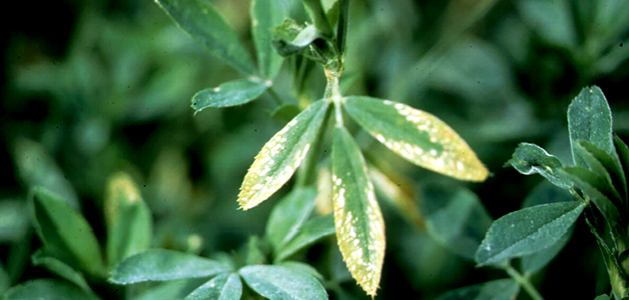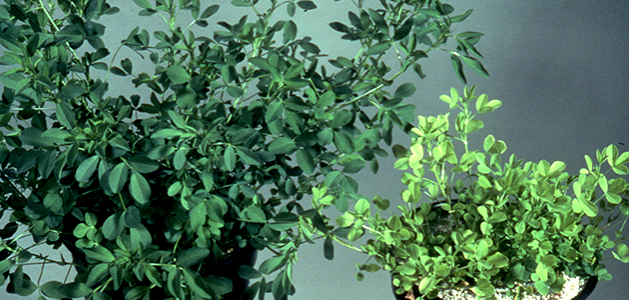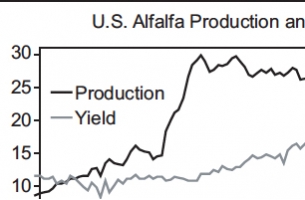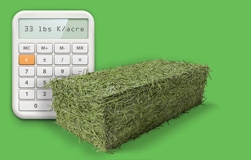Identifying Nutrient Deficiencies in Alfalfa
What is your alfalfa trying to tell you when leaf discoloration, stunting or scorching become visible? And, can you tell a potassium deficiency from a sulfur deficiency?
In your alfalfa, signs of a deficiency can vary depending on the nutrient that's deficient in your soil. This article will identify some common signs of deficiency*, but preventing any of the following signs from developing is the key. Because once you see any indication of a deficiency, the damage has been done.

Potassium – signs of a deficiency in alfalfa include leaf spotting and or yellowing (Shown above) along the leaf margins. It also generally starts to appear on older leaves first. In addition, a potassium deficiency can make your crop more susceptible to disease.
Sulfur – plants deficient in sulfur typically appear a light green color with yellowing generally occurring in younger leaves first (Shown below). This is one way you can visually tell it's different from a potassium deficiency.

Phosphorus – a stunted plant can be a sign of a phosphorus deficiency. More severe signs include distorted leaf shapes, and a dark green coloration of the tissue. Dead areas on the leaves are also a symptom.
Nitrogen – this deficiency visually manifests in the form of dark green coloration in the leaves, then yellowing on the leaves. Another sign includes a stunted, spindly plant. Additionally, a nitrogen deficient plant will mature early, but have a lower yield and crop quality.
Soil and tissue testing will verify the deficiency involved, but your best bet is to be pro-active and avoid a problem altogether.




